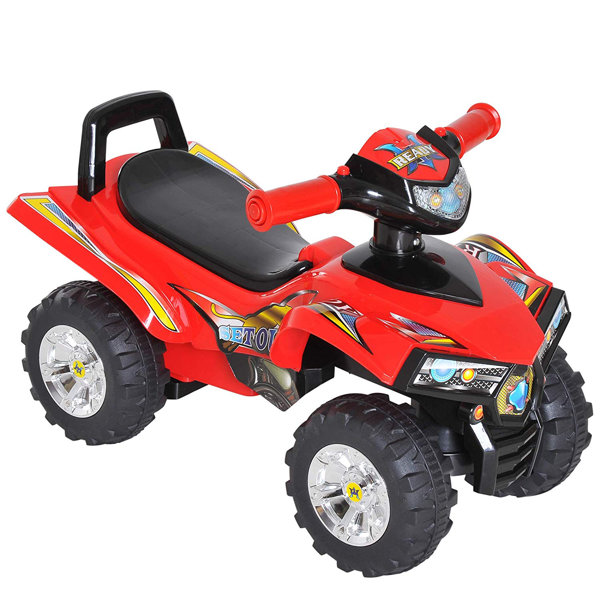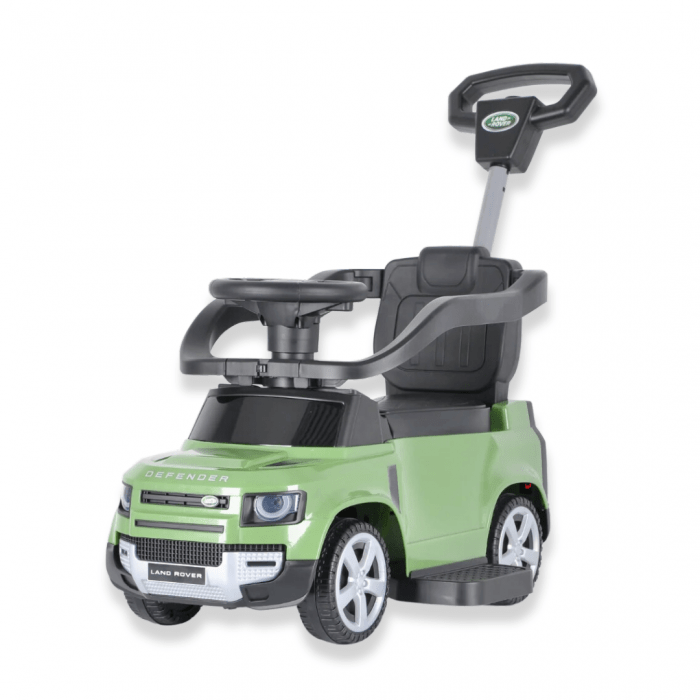What Do I Need Be Aware Of About The Battery's Life And The Charging Time Of An Electric Ride-On Kids Car?
Knowing the battery type and charging times of an electric kid's ride-on vehicle is crucial to ensure optimal performance and continuous time for play. Here's the information you need to know: Type of Battery
The majority of electric vehicles for children are powered by rechargeable batteries. They could be lead-acid or lithium-ion. Lithium-ion batteries usually have a longer battery lifespan and quicker charging times compared to lead-acid batteries.
Battery Capacity -
The ride-on vehicle's operating time is determined by the battery capacity. This is measured in amp-hours, or watt-hours. Higher capacity batteries offer longer duration between recharges.
Run Time -
The running time of an electric ride-on car refers to the length of time it will operate continuously on a single charge. The running time of an electric ride-on automobile can vary based on factors such as the battery's capacity and the motor's power. It is also dependent on the terrain and the user's weight.
Common electric ride-on vehicle runs last between 30 minutes to two hours per charge. Nevertheless, high-capacity lithium batteries will provide longer running time.
Time for Charging -
The charging duration is how long it takes the battery to fully recharge after it has been exhausted. The charging time can differ based upon the capacity of the battery, the specifications of the charger and the method of charging.
Charge times for electric ride on vehicles are usually between 8 and 12 hours. However, some models may offer quicker charging times, particularly equipped with lithium-ion batteries.
Follow the instructions for charging provided by the manufacturer to ensure battery safety and long-term durability. Incorrect charging or overcharging the battery could alter its performance and extend its lifespan.
Charging Method
Electric ride-on vehicles are typically equipped with a charger which plugs into an ordinary home outlet. Some models offer fast charging or include a clever charger that controls the rate at which a battery is charged.
Verify whether the chargers and connectors on the port on the ride-on car are compatible to avoid any damage to the battery or electrical components.
Batteries for Other Use
Some electric cars allow the purchase of additional or extra batteries. This may extend playing time. With extra batteries in stock, you can swap out the battery that has been depleted to one that is fully charged to reduce downtime.
When you understand the battery's life and charging times of an electric ride-on kids' car it is possible to ensure that your kids will enjoy fun and uninterrupted playtime while exploring their environment. Using the correct charging techniques and charging the battery regularly will prolong battery life. See the most popular Mercedes kids car for more info including kids electric cars, riding digger, electric car ride, toy car for car, childrens electric cars, car toy car toy, car for toy, a toy car, electric ride on, electric car ride and more. .

What Assembly And Maintenance Are Required For A Child's Car Ride-On?
It is common for kids' ride-on car to require some assembly as well as ongoing maintenance, in order to maximize performance and security. These are the most common assembly and care requirements for children's rides-on vehicles.
Most cars that ride on are not fully assembled upon arrival, and need some sort of assembly. Attaching the components like wheels as well as steering wheels and seats, according to the specifications of the manufacturer, is a common practice.
Install the components in accordance with the directions. Make use of the tools and hardware to complete assembly.
Cleaning -
Regularly cleaning is vital for keeping the ride-on vehicle in top condition and operating properly. Use a soft sponge, or cloth soaked in mild soap and water to wash the exterior surfaces.
Be aware of areas that are prone to build up such as tires, wheels and undercarriage. Utilize a toothbrush and brush to clean those difficult-to-access areas.
Use of harsh chemicals, abrasive cleaners or high pressure water sprays can damage the paint or electronic components of the ride-on cars.
Battery Care
To keep the battery running efficiently and extend the life of a ride-on battery, it is essential to take good treatment of your battery. Here are some guidelines for taking care of your battery.
The battery must be fully charged prior to first use and after each use to ensure that you get the maximum amount of runtime.
Beware of overcharging and not leaving the battery in the charger for prolonged periods. This can damage the batteries and reduce their lifespan.
The battery for the ride-on car is best stored in a cool, dry space when not in use and away from direct sunlight or temperatures that are extreme.
The battery terminals should be examined regularly to check for corrosion and damage. They can be cleaned using wire bristles or terminal cleaner, if required.
If the battery stops charging or shows signs or damage, replace it.
Tire Maintenance -
Check your tires regularly for wear, damage or a decrease in air. Make use of a bicycle compressor or air compressor to fill the tire to the recommended pressure.
Check the tread pattern of your tires to identify obstructions and foreign matter that can cause punctures or flats. Repair or replace damaged tires, if needed. Eliminate obstructions.
Lubricate axles and wheel bearings regularly to reduce friction and ensure smooth rotation.
Occasional Replacements or Repairs
Wear and tear or accidental damage can cause ride-on car parts to require replacement or repair.
Look out for any signs of malfunction or degradation, such a strange noise and erratic behavior or loss of power. For help with troubleshooting or repairs, consult the manufacturer's instructions.
Replace damaged or worn components immediately to avoid any further damage and ensure the safety of your ride on the car.
Follow these instructions to maintain your child's ride-on car and ensure hours of fun and safe play for them. View the top find out more for ride on toys for blog recommendations including electric ride along car, 2 seater electric cars, kidscars, cars pedal car, pedal car, ride on car, car toy car toy, ride ons, ride of car, toy ride and more. .

What Is The Best Remote Control Car To Use With Children? What Are Their Advantages And Disadvantages?
Remote control children's cars are also referred to RCs or remote controlled cars. They come in a range of designs, prices and sizes to meet all budgets and tastes. This article will provide an overview of the different types, sizes and prices of children's remote control cars, along with their pros and cons.
Electric RC Cars – Battery-powered remote controlled cars suited for use indoors or outdoors. They come in a variety of types, including buggies, trucks and sports cars.
Nitro RC Cars – Gas powered remote controlled vehicles that provide better performance, but require more maintenance. They tend to be larger and cost more than electric RC cars.
Scale models are replicas of real life vehicles including cars and trucks. They are also controlled remotely. Scale model sizes range from 1-10 to 1--24. Larger models have more details and greater real-world realism.
Sizes -
The sizes of remote-control cars for children range from tiny miniature versions to larger-scale replicas. The size and weight of the car will affect its performance.
Micro-sized cars are small and light, making them suitable for indoor use and for children who are younger. The larger cars have greater power and endurance and are perfect for racing outdoors and off-road driving.
Prices
The price of a car with remote controls for children varies depending on its size and features, the manufacturer, and build-quality.
Small electric RC cars range from $20 to $100, while larger-scale nitro and electric cars are available between $100 and $500 or more.
Scale models, premium hobby RCs may cost from several hundred bucks up to a whopping $1,000, depending on the detail level and the performance.
Pros and Cons
Pros -
Entertainment - Children's remote controlled automobiles can bring hours of excitement and enjoyment for both adults and children.
Skill development The RC car helps children to improve their spatial awareness as well as hand-eye co-ordination.
Social Interaction. You can go on RC vehicles with your loved ones and family, which promotes social interaction.
Customization - Many RC vehicles can be customized with aftermarket upgrades parts and accessories that boost performance and aesthetics.
Cons
Costs - A car that is remote controlled for children with advanced features or even hobby quality models can cost quite a bit.
Learning Curve: Operating an RC Car requires practice and ability, and younger children might be unable to master the task initially.
Maintenance: RC cars need regular maintenance, including cleaning regularly, oiling, and replacing parts or repairs.
Safety Concerns - RC vehicles can present dangers to safety, such as collisions, falls, and electrical hazards, if not utilized in a responsible manner and with adult supervision.
Remote-controlled cars for kids can be a fantastic learning and entertaining experience. But, it's essential to pick the correct model based on the factors of size, safety, cost and features. These RCs are suitable for teenagers and older children, and simpler models can be a good fit for younger children and beginners. Have a look at the best Lamborghini kids car kidscars.co.uk recommendations for blog tips including ride of car, two seater electric cars, electric ride on cars, ride of car, toy cars, toy toy cars, childrens electric ride on, toy ride, childs electric ride on car, toy cars toy car and more. .

Comments on “Free Reasons For Picking Kids Ride On Cars”